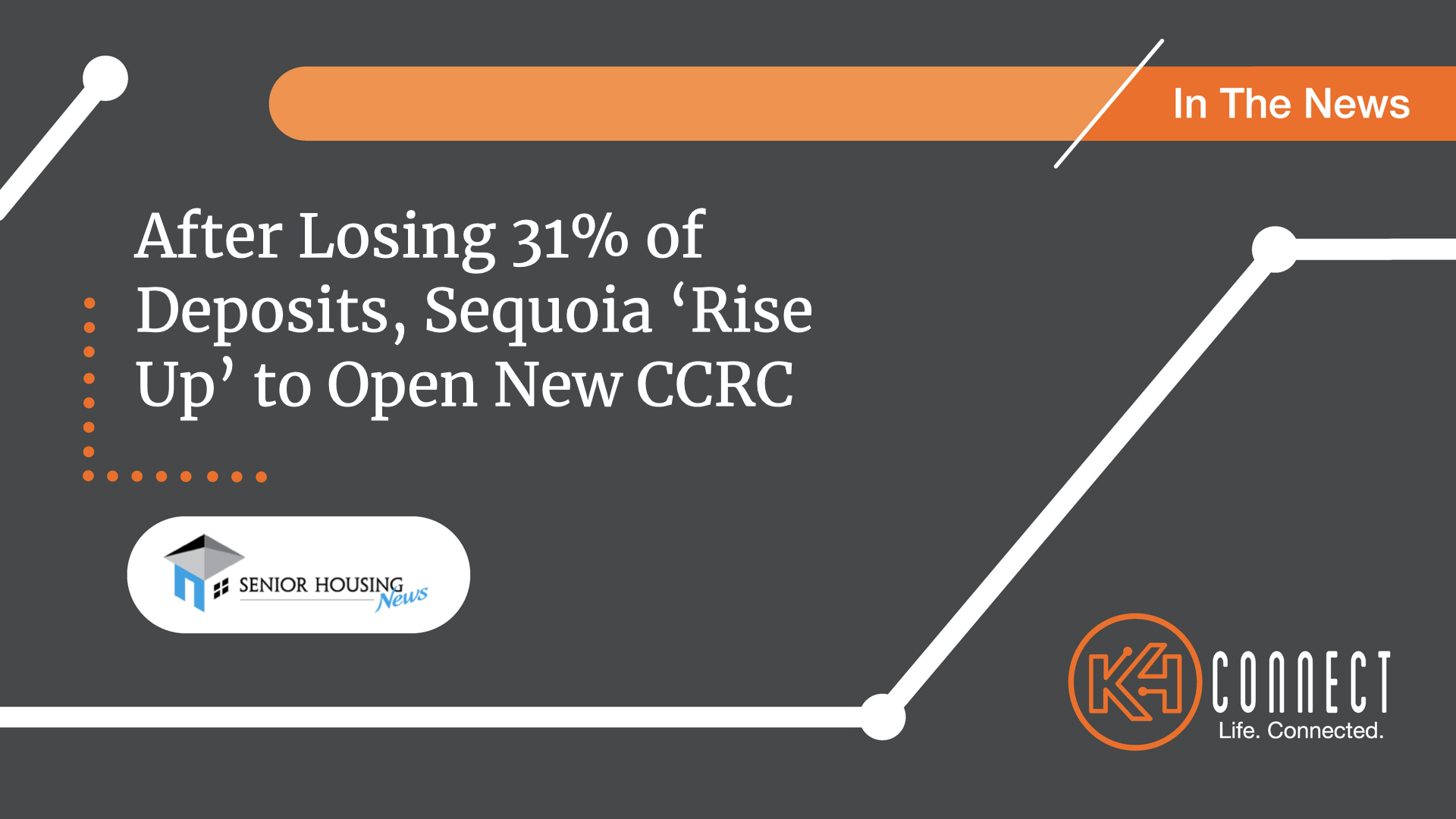The provider partnered with K4Connect to bring the K4Community platform to the campus. K4Connect was already preparing for the pandemic before its initial disruption, adding tweaks to the platform including virtual support for on- and off-premise staff, establishing hotlines for its client communities to keep residents and families updated on their response strategies, and “Covid 911” bulletins to communities it serves.
By: Chuck Sudo
December 15, 2020
Opening a new senior housing community is stressful under normal circumstances. Opening one during a public health crisis presents added challenges.
Take Sequoia Living, which opened Viamonte at Walnut Creek, a continuing care retirement community in Walnut Creek, California, two weeks ago. The San Francisco-based owner and operator lost 31% of its entrance fee deposits on the community during the pandemic’s span, CEO Sara McVey told Senior Housing News.
Although skilled nursing is not included, Sequoia considers the community a CCRC and offers memory care under its continuing care contract.
Additionally, Viamonte was originally scheduled for a late summer opening. Pushing back first move-ins to December resulted in several months of lost service fee revenue, on top of the reduction in entrance fees.
But the delay in opening allowed Sequoia Living to implement the lessons from its Covid-19 response to Viamonte as the Golden State is racked with another wave of positive cases and Governor Gavin Newsom announced another statewide lockdown in the hopes of reducing the scale of the outbreak.
“Opening a new community in the best conditions can bring you to your knees,” she said. “Doing it during a pandemic forces you to rise up in a way that you didn’t even know you could, or needed to.”
In addition to Viamonte, Sequoia Living owns and manages three CCRCs in San Francisco, Marin County and Portola Valley, as well as The Woods, an affordable manufactured housing community in Mendocino. Sequoia also operates a senior services center in San Francisco; manages affordable senior apartments in San Francisco and San Jose; and offers home health, hospice and respite care services.
Pre-sales plummet
Sequoia Living was cruising with pre-sales on Viamonte, notching 94% on entrance fee deposits in March, just before Covid-19 disrupted the country. By the time the first residents arrived earlier this month, that number fell to 63%.
“It was definitely a nail-biter,” McVey said.
Sequoia worked with Greenbrier Development, which handles marketing and sales for Viamonte, to pivot the sales message to emphasize Sequoia’s Covid-19 response across the portfolio, generate new leads, assuage concerns of depositors that they would be safe when the CCRC eventually opened, and highlight design features that emphasized safety in the new environment.
Viamonte is part of The Orchards at Walnut Creek, a mixed-use master-planned development including a supermarket, retail, unique outdoor spaces and landscaping where residents can enjoy and connect with the larger surrounding community, while adhering to social distance guidelines.
Viamonte’s apartments have individualized HVAC systems, ensuring cleaner air is already built into the design. Meanwhile, devices and sensors intended to reduce touchpoints were already part of Viamonte’s buildout.
The provider partnered with K4Connect to bring the tech provider’s K4Community platform to the campus. K4Connect was already preparing for the pandemic before its initial disruption, adding tweaks to the platform including virtual support for on- and off-premise staff, establishing hotlines for its client communities to keep residents and families updated on their response strategies, and “Covid 911” bulletins to communities it serves.
Finally, after a conversation McVey had with Transforming Age President and CEO Torsten Hirche, Sequoia Living invested in seven Skytron UVC disinfection robots for deployment across the portfolio, including Viamonte. Each robot costs around $80,000, Hirche told SHN in May.
McVey views the robots as an investment in the future. The pandemic cleared the way for some new best practices, and the Skytrons will provide a long-term return on their investment.
“There’s the flu. There’s MRSA. There’s always going to be some sort of germ that needs to be removed from the environment for safety reasons,” she said.
Move-in velocity improves
McVey expects move-in velocity to gain momentum, despite Newsom’s latest lockdown order. The lessons learned responding to the pandemic’s early weeks, and vaccines being rolled out to frontline health care workers and vulnerable populations in long-term care facilities are expected to provide prospects more confidence when considering a move to senior housing. Sequoia has 50 new residents moving to Viamonte in December, more move-ins planned for January and February, and a list of depositors waiting until they feel the pandemic is under better control before making their moves.
Newsom’s latest order is also not as extensive as the ones implemented during the spring, when less was known about the coronavirus, and some areas of California are under stricter orders than others. Nevertheless, Sequoia Living is responding to the order with a unified approach that covers its entire portfolio, regardless of location.
“Given the fact that none of the counties are necessarily on the same page, it would be simpler if we just had a cohesive plan of what we’re doing,” McVey said.
Despite the struggles and loss of months in service revenue, Sequoia Living has not amended its pro formas for Viamonte and still anticipates reaching stabilized occupancy within 36 months.
It is, however, considering waiving entrance fees or refunding them within a set time frame if residents are not satisfied with their accommodations. It is also giving prospects “trial” periods at Viamonte, to see if they would want to consider a more permanent move.
“We’re trying to meet people where they’re at and, at this point in time, where people that are willing to move in right now are moving in because they get it,” McVey said. “This is what they’ve always understood — it’s a plan for the rest of their life.”
Read more from Senior Housing News, here!

